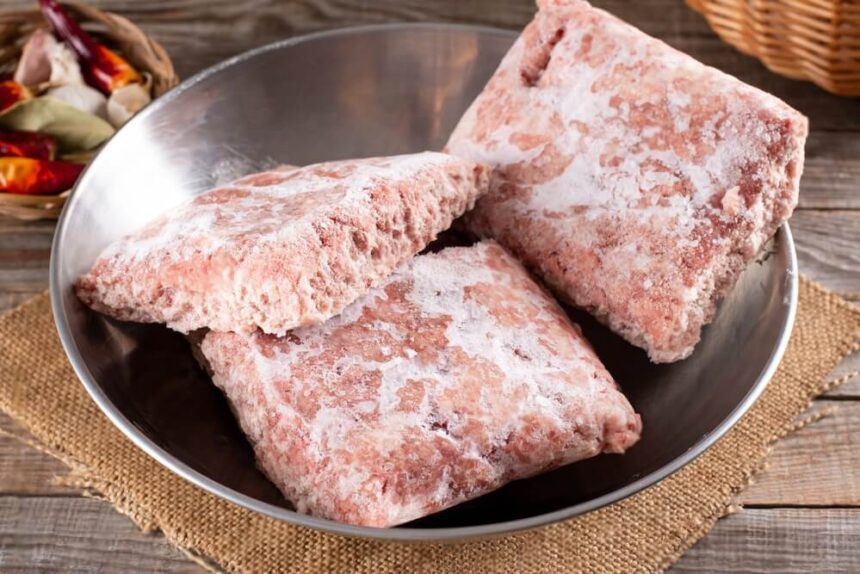Ever found yourself staring at a half-empty can of wet cat food, wondering if you can save it for later by freezing it? Well, you’re not alone! This is a common question among cat owners who want to avoid waste and keep their feline friends happy. Let’s dive into the nitty-gritty of freezing wet cat food, the best practices, and some tips to keep in mind.
Why Freeze Wet Cat Food?
First off, why even bother freezing wet cat food? There are a few good reasons:
- Preserve Freshness: You can extend the shelf life of your cat’s favorite meals.
- Reduce Waste: Less food thrown away means more savings.
- Convenience: Having pre-portioned meals ready to go can save you time.
Can You Freeze Wet Cat Food?
The short answer is yes, you can freeze wet cat food. But, as with many things in life, the devil is in the details. It depends on the type of food, how you freeze it, and how you thaw it. Let’s break it down.
Choosing the Right Wet Cat Food for Freezing
Not all wet cat foods are created equal. Some freeze better than others. Here are a few things to consider:
- Ingredients: Foods with higher water content or gravy may change texture when frozen.
- Quality: Higher-quality brands often freeze better due to fewer fillers and better ingredients.
How to Freeze Wet Cat Food
Ready to freeze? Here are the steps to follow for the best results:
Use Airtight Containers
Moisture is your enemy when freezing. Use airtight containers or freezer bags to keep out the moisture and prevent freezer burn.
Freeze Immediately
Don’t let the food sit out for too long before freezing. The fresher it is when it goes into the freezer, the better it will be when it comes out.
Label Your Containers
Always label your containers with the date and type of food. This helps you keep track of how long it’s been in the freezer and prevents any mix-ups.
Portion Sizes
Freeze in single-serve portions. This makes thawing and feeding easier and reduces waste.
How to Thaw Frozen Wet Cat Food
When it comes to thawing, there are a couple of methods you can use. The key is to thaw it safely to maintain its quality and prevent any potential health issues for your cat.
Refrigerator Thawing
The best way to thaw wet cat food is to transfer it from the freezer to the fridge. This slow thawing process helps maintain the texture and flavor. Plan ahead as this method can take several hours or even overnight.
Avoid Microwaving
Microwaving can create hot spots and alter the texture, making it less palatable for your cat. If you’re in a pinch, use the defrost setting and stir frequently, but this is not the recommended method.
Potential Risks and How to Avoid Them
Freezing wet cat food can be a bit of a gamble. Here are some risks and tips to avoid them:
Texture Changes
Wet cat food can become mushy or grainy after freezing. This is especially true for foods with high water content. Opt for pâté-style foods as they tend to hold up better.
Bacterial Growth
Improper freezing or thawing can lead to bacterial growth. Always use airtight containers and thaw in the refrigerator. Never refreeze thawed cat food.
Nutrient Loss
Some nutrients may degrade during the freezing and thawing process. Ensure you’re feeding a balanced diet to your cat and consult your vet if you have concerns.
Best Practices for Freezing Wet Cat Food
Here are some additional tips to ensure you’re freezing and thawing your cat’s food safely and effectively:
Quality Matters
Opt for high-quality wet cat foods. These often have fewer fillers and better ingredients that withstand freezing better.
Use Frozen Food Within 24 Hours
Once thawed, use the food within 24 hours. This helps maintain its freshness and prevents any potential spoilage.
Store Foods at the Correct Freezer Temperature
Keep your freezer at 0 degrees Fahrenheit or below. This ensures the food stays properly frozen and reduces the risk of spoilage.
Signs Frozen Cat Food Has Gone Bad
It’s important to know when to toss out frozen cat food. Here are some tell-tale signs:
Freezer Burn
Look for icy crystals or discoloration on the food. Freezer burn affects texture and flavor.
Odd Smell
If the food smells off or different from when you froze it, it’s best to discard it.
Mold or Bacteria
Any visible mold or unusual texture is a clear sign the food has spoiled.
FAQs
Can I Freeze Any Wet Cat Food?
While most wet cat foods can be frozen, some may not freeze as well due to their ingredients. It’s best to test a small portion first.
How Long Can I Store Frozen Wet Cat Food?
For best quality, use frozen wet cat food within three months. Always label your containers with the freezing date to keep track.
Can I Refreeze Thawed Wet Cat Food?
It’s not recommended to refreeze thawed wet cat food as it can increase the risk of bacterial growth and spoilage.
How Can I Keep Wet Cat Food Fresh Without Freezing?
Store opened wet cat food in an airtight container in the fridge and use it within 2-3 days. Keeping it cold and covered helps maintain its freshness.
Is Freezing Wet Cat Food Safe?
Yes, freezing wet cat food is safe if done properly. Ensure you’re using airtight containers and thawing safely in the refrigerator.
Conclusion
Freezing wet cat food can be a great way to save money and reduce waste. Just make sure to follow these guidelines to ensure your cat’s meals stay fresh and safe. Always prioritize quality, use proper storage methods, and be vigilant about checking for signs of spoilage. With a little care, you can make the most out of your cat’s wet food and keep them purring with satisfaction.
Now you’re all set to keep your kitty’s meals fresh and tasty, even if you need to store them for a while. Happy feeding!



